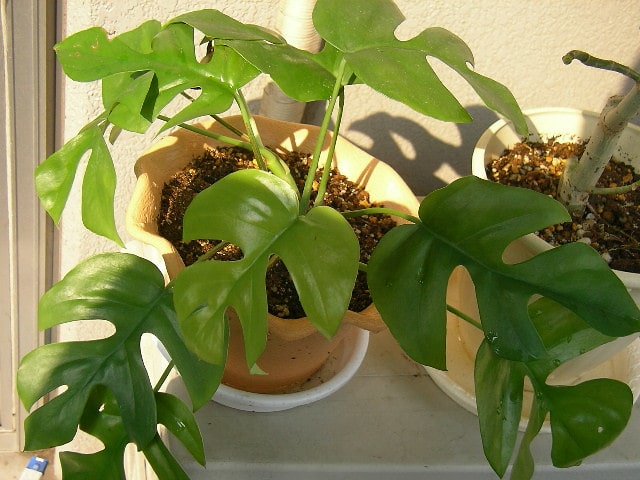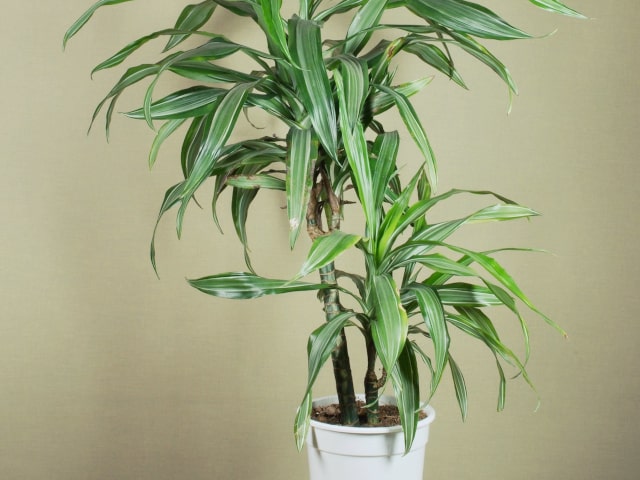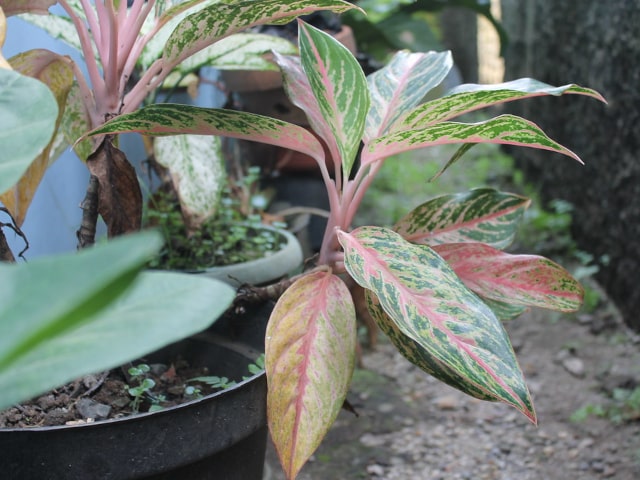
Monstera plant, this tropical philodendron, is a common houseplant found in many homes. The plant, also known as the Swiss cheese plant, is gorgeous and it can be grown easily. This is good news for all beginners and those without much time to dedicate to gardening. You will easily recognize this plant by its characteristic splits in leaves.
In order to keep your Monstera plant happy and to make it thrive, it is crucial to repot it every few years. Repotting will ensure that your plant has enough space to grow. Also, repotting encourages adequate soil nutrition, which is also important.
When repotting, it is important to keep in mind several factors: suitable soil, space and stalking. All these are crucial for making your Monstera plant thrive in your home or an office.
One thing you need to understand about Monstera plants is that they are thick-stemmed vines that easily support themselves on other vegetation in their natural habitat. They grow long roots that go from the stem to supplement this support. It means that you will need to mimic this environment in your home in order to make your Monster plant thrive.
It is important to understand that staking may be required, but they will still produce stiff roots from the trunk. This fact can make repotting of a Monstera plant a bit of a challenge, so it is important to be ready for it.
Caring for a Monstera Plant
Monstera plants are easy maintenance. The main conditions you need to provide are temperatures that are at least 65 degrees F (18 degrees Celsius) or warmer than this. Another thing you need to provide is moderately moist soil, as well as plenty of humidity.
It is crucial to provide your Monstera plant with something to hold on to. A moss-covered or a wooden stake is a good choice. You should set it into the middle of the pot to provide your Monstera plant with some added support.
Repotting Monstera Plant
It is best to repot your Monstera plant every year while it is still young. This will encourage better and faster growth. It also helps with refreshing of the soil, which is important to make your plant thrive.
The best time to repot your Monstera plant is early in the spring, before it sports new growth. Repotting it during this time gives the best results and allows your plant enough time to recover before the fall and winter.
Remember that Monstera is a plant native to tropical jungles. As such, it needs rich soil that is dense with nutrients. The soil should also hold moisture without remaining soggy. You can use a standard, good-quality potting soil, but it is important to add some peat moss to it.
When choosing a new container, make sure to use one that has plenty of drainage holes. Another thing you need to keep in mind us that the container has to bee deep enough to accommodate the plant's thick stake.
When repotting, it is important to go only one container size up, all the way until you reach the largest pot you wish to use for your Monstera plant. After this, you will not repot into a large container, but you still need to perform repotting every year. Repotting without a larger pot includes adding a fresh top dress of rich soil every year. However, once it reaches this size and the largest pot, it will be happy for a few years at a time. This is true even if your Monstera is root bound.
The first step is to fill the bottom third of the contained with the soil mixture. Once it is ready, put the stake in the center. If your plant is mature and large, you might need an additional pair of hands to secure your Monstera plant. The other person should help you support the upper part of the plant during repotting.
To repot, set the base of the plant into the container. Make sure that the original soil line of the plant is a bit below where the new line will be. Once this is done, simply fill in around the base roots. Also, fill around the aerial roots that reach into the soil. Make sure to firm up the potting mix around the stake. Use plant ties to attach the stem to the stake.
After Repotting
Once repotting is done, make sure to water deeply. After this, make sure to wait a whole week or two before you resume your monthly fertilizing regime using a liquid fertilizer during watering.
Keep in mind that the Monstera plant might simply get too big for your space or for its pot. It is known to reach 10 or more feet in height in its natural habitat. You generally won't expect it to grow this much inside of the home, but the plant can get bigger than what you expected when you got it. You can trim the plant to adjust it to the size you need. Any cuttings can be used to start a new Monstera plant.
Photo credit: Hajime NAKANO




0 Comments